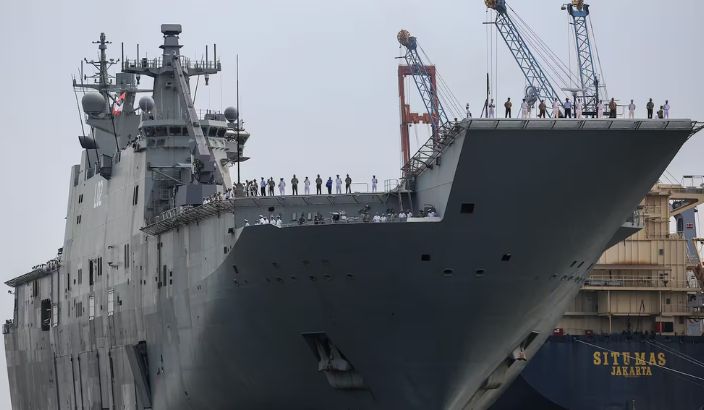Aussie naval ship disrupts internet across Marlborough


The Royal Australian Navy ship HMAS Canberra disrupted internet access throughout Taranaki and Marlborough. Photo: Supplied/Royal Australian Navy.
A visiting Australian naval ship caused wide-spread internet and radio outages as it moored in the waters off Blenheim last week.
Brendon Price, owner of Blenheim’s Accelerated Wireless, says they began seeing issues with interference involving one of their towers at around 8.30am last Wednesday. “It progressively got worse over half an hour on our other towers,” says Brendon.
The cause was eventually identified as the visiting Australian ship HMAS Canberra, which arrived in Marlborough on Wednesday morning, anchoring off the coast, before heading to Wellington on Thursday.
The scale of disruption was “pretty much unheard of”, according to Brendon. “We’ve never seen anything like it.”
TPNET.NZ technical manager Sam James says they were one of many wireless providers who experienced interference as the ship made its way into Marlborough. “As the ship moved, its high-powered radar system triggered what’s called DFS (Dynamic Frequency Selection) events on our 5 GHz wireless gear.”
Sam says the 5 GHz band is shared spectrum — widely used by rural internet service providers (ISPs) for long-range wireless connectivity, but it also overlaps with radar systems like aviation control and MetService’s rain radar. “To avoid interference, our radios are legally required to detect radar activity and immediately stop transmitting or switch channels.
“In this case, the Canberra’s military-grade C-band radar was strong enough to trip those protections across multiple regions.
“This kind of event is rare, and to be fair, no one really did anything wrong. The equipment behaved exactly as it’s designed to — it’s just that a visiting warship doesn’t normally show up in the spectrum plan.”
Sam says, on their service the impact was mostly felt across the Wairau Plains, eastern Marlborough Sounds, and toward Ward. Brendon says, as their towers have a clear line of site to Cloudy Bay, where the ship was anchored, they saw interference across the region including central Blenheim.
He says it was as if the frequency got “very noisy”, and caused customers to see severe drops in internet speed. “Essentially, any site or customer using certain DFS frequency blocks with a clear line of sight from Cloudy Bay inland toward the hills was exposed to the ship’s radar. In other words — their big fish finder caused a bit of chaos,” Sam adds. “Once the source was identified, we understand the ship adjusted frequencies to reduce disruption and things settled down pretty quickly.”
A New Zealand Defence Force spokesperson says the issue was reported to them. “We contacted the Australian Defence Force, and the issue was resolved.”
However, he says the outage should spark a wider conversation around the availability of other spectrum bands in New Zealand.
Sam says the incident highlights just how fragile rural networks can be when built “entirely on shared or congested spectrum”.
“Countries like Australia and the US are opening up new spectrum bands like 3 GHz and 6 GHz to give regional providers more room to build high-capacity, resilient links. Here in New Zealand, those same bands remain mostly off-limits or underutilised — even though the gear is available and the need is growing.”
